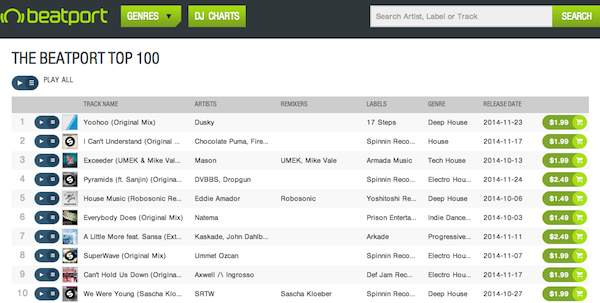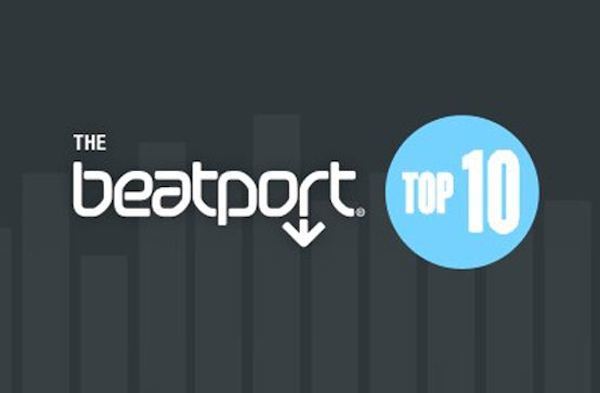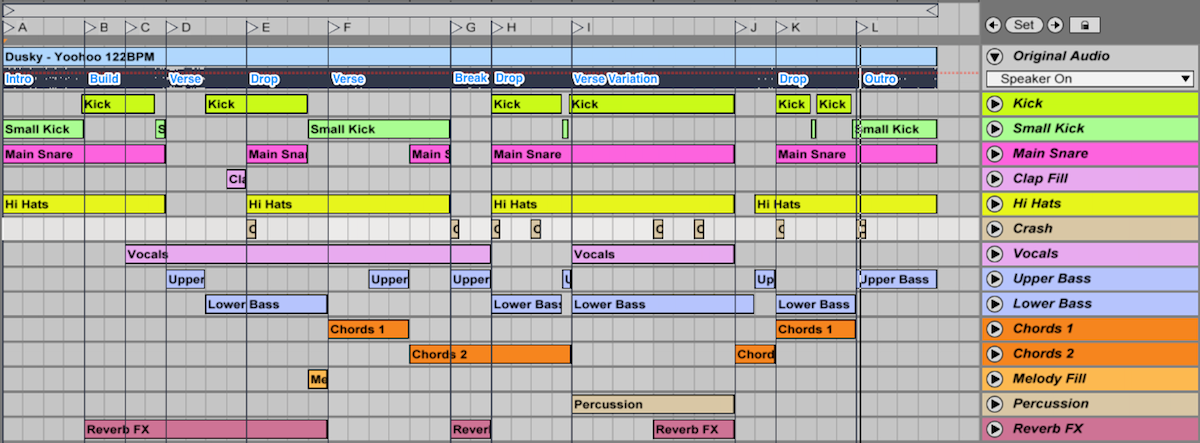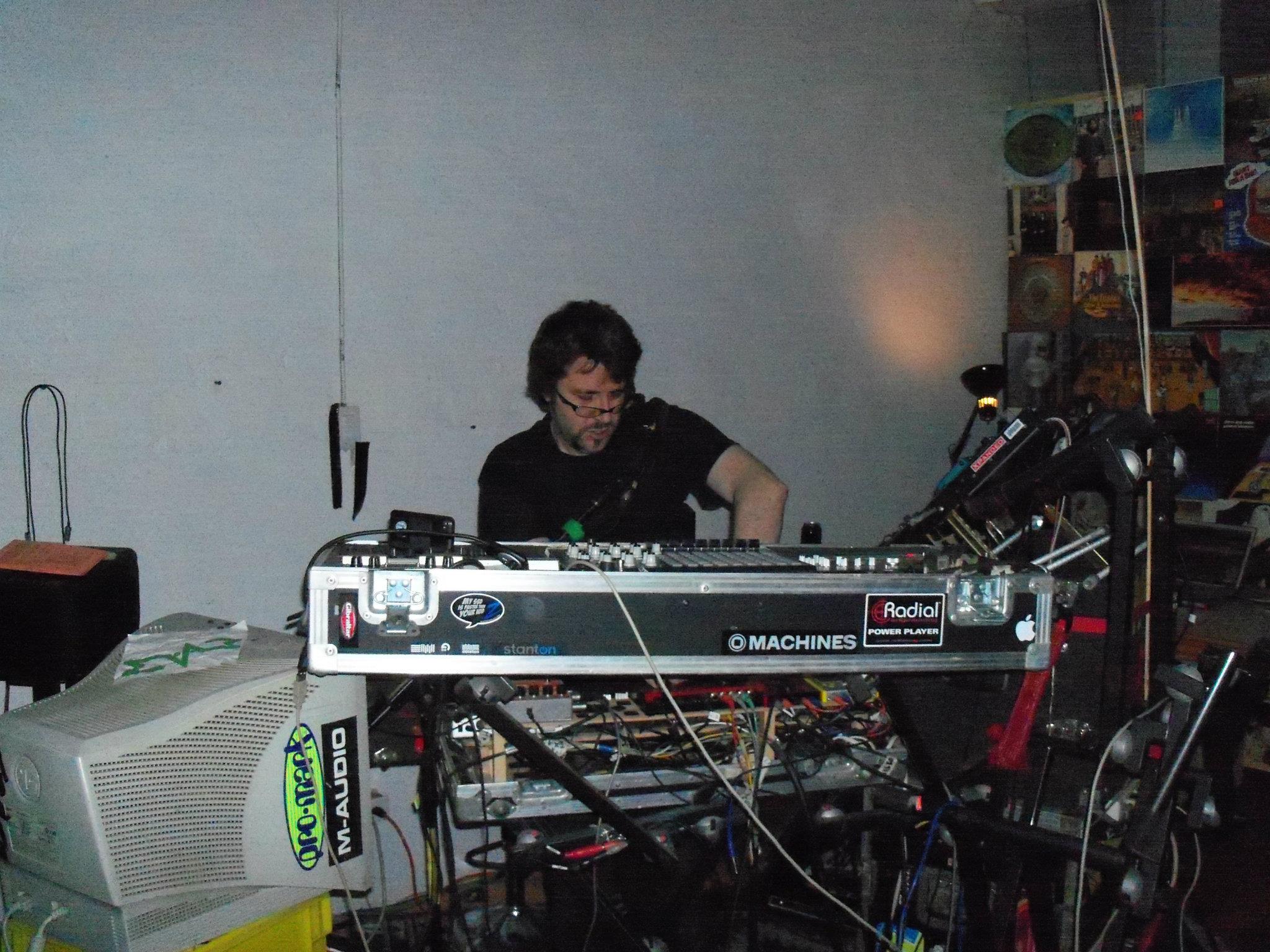Beatport is the number one source for DJs to purchase high quality music to use in their live performances and mixes. It’s Top 100 is often used by DJs as a barometric tool to better understand what styles are trending and what’s currently hot in the electronic dance music market.
Swedish EDM duo Daleri released their mini mix Epic Mashleg a while back featuring a selection of music sourced from the Beatport Top 100. It intended to exemplify the way in which it is often populated by a growing number of tracks that seem to share strikingly similar approaches to arrangement and production styles.
While some have praised the mini mix for highlighting everything that’s wrong with current trends in EDM, others have been critical and voiced the opinion that perhaps Daleri and their disciples are missing the point of EDM entirely. Whatever side you take, it’s clear that Beatport’s Top 100 comprises many of the top selling tracks in the industry today.
So what is it about these arrangements that seems to work so well? To find out, we’ve analyzed and examined tracks from the current top 10 best-selling on Beatport and created arrangement templates for you to check out and use in your own productions! Just sign up for Splice and download these projects to get started.

Dusky – Yoohoo
The key to this and many arrangements is building tension and then releasing it by having the beat drop. Dusky constructed the intro and outro sections sparingly, falling back on to a relatively simple house beat that lends itself quite well to beat matching. This style of arrangement is appealing to DJs since it makes it much easier to enter and exit the track during a mix, which will get your track played more!
This track provides an excellent example of the use of midpoint. After one cycle, Chocolate Puma and Firebeatz give us a breather through the use of a bridge section featuring vocoded vocals, then come back around to give us another full cycle before cueing the outro.
For this track, DVBBS and Dropgun follow a Verse/Chorus/Bridge paradigm that’s much akin to the methods used by mainstream pop artists. As the popularity of electronic dance music has grown, so too has the use of this conventional pop form as applied to electronic stylings – the key difference being that the chorus section in this case is purely instrumental.
As the name implies, Robosonic’s remix of House Music by Eddie Amador borrows heavily from traditional arrangement methods of early long form house production. Elements come in and out in a way that doesn’t necessarily demarcate a change of section, which leaves listeners feeling like they’re going on a journey rather than listening to a song.
UMEK and Mike Vale’s Remix of Exceeder is a prime example of using subtle arrangement elements to tease the drop. The arrangement builds all the way to the two minute mark, at which point it finally gives the audience a chord progression to latch on to – only to turn right back around after just one pass, starting the cycle of tension and release all over again.
Though these tracks are all quite different from one another, they share many common arrangement conventions which may account for their rampant success. As you study these tracks, try to take notice of the subtle yet masterful ways in which the producers were able to seamlessly integrate and blend essential elements such as intro, build, break, drop, hook, and outro. The placement and management of these elements can have a huge impact on the flow of the track. Each has a specific purpose and provides listeners with a steady stream of interesting textures that change over time. Attaining success through music is all about the ability of producers and songwriters to convey energy and emotion, transporting listeners from one place to another. Each of these tracks skillfully toe the line between ebb and flow, push and pull, ying and yang, in their own unique ways.
Check out the Beatport Top 100 often to see what’s new and trending in electronic music, feel free to use these templates in your own work, and as always be sure to share what you’ve learned with the Splice community by posting your latest projects!
Explore royalty-free sounds from leading artists, producers, and sound designers:
December 10, 2014




